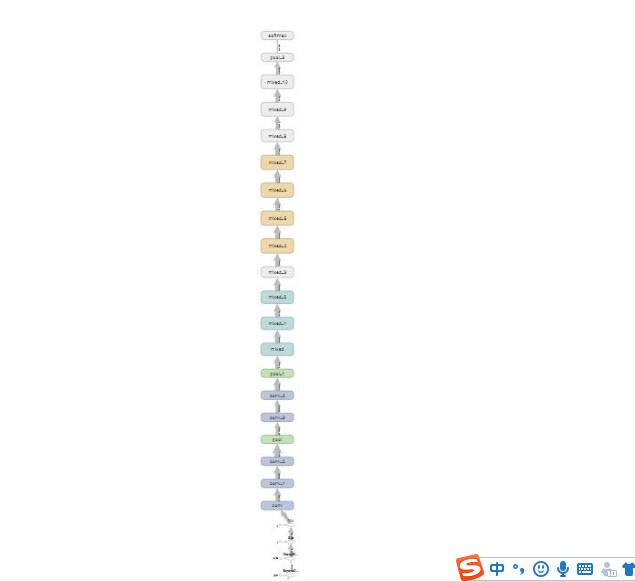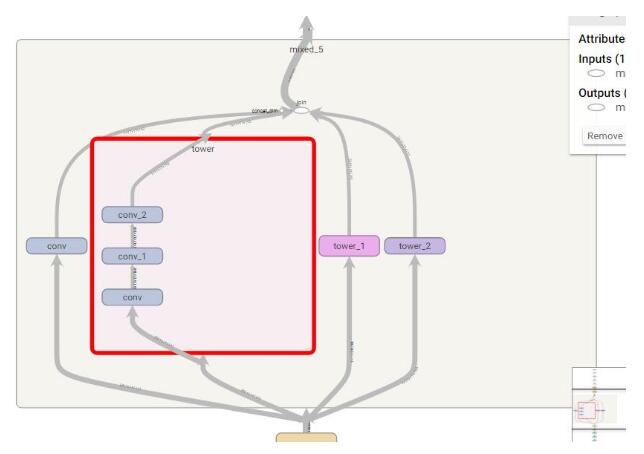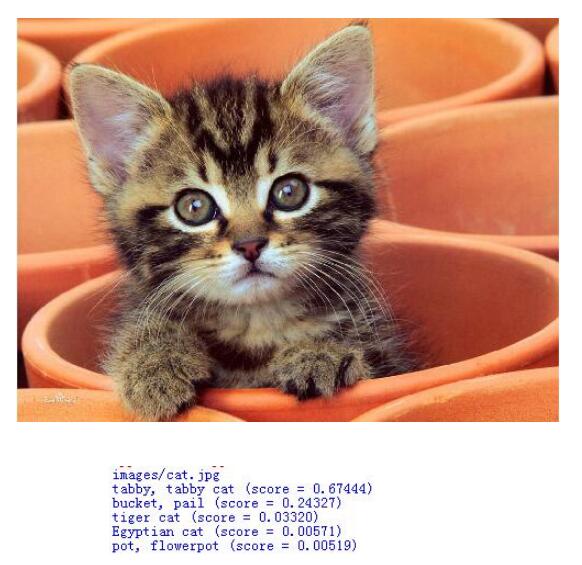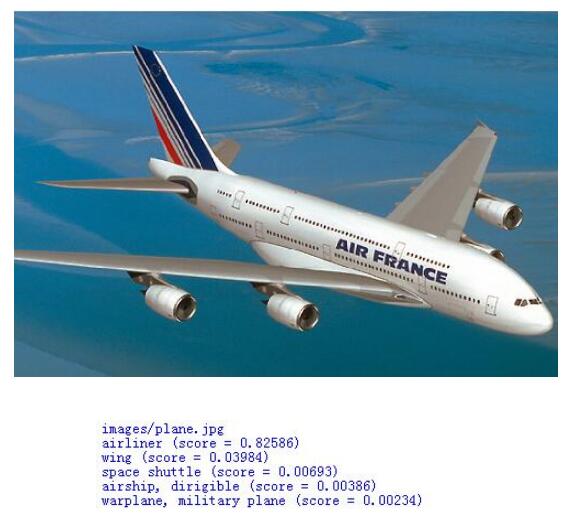TensorFlow学习笔记(七) 使用训练好的inception_v3模型预测分类图片
下载需要练习的inception模型并看起流程
import tensorflow as tf
import os
import tarfile
import requests
#inception_v3模型下载
inception_pretrain_model_url = 'http://download.tensorflow.org/models/image/imagenet/inception-2015-12-05.tgz'
# 模型存放地址
inception_pretrain_model_dir = "inception_model"
if not os.path.exists(inception_pretrain_model_dir):
os.makedirs(inception_pretrain_model_dir)
#获取文件名,以及文件路径
filename = inception_pretrain_model_url.split('/')[-1]
filepath = os.path.join(inception_pretrain_model_dir, filename)
#下载模型
if not os.path.exists(filepath):
print('download: ', filename)
r = requests.get(inception_pretrain_model_url, stream=True)
with open(filepath,'wb') as f:
for chunk in r.iter_content(chunk_size=1024):
if chunk:
f.write(chunk)
print("finishn: ", filename)
#解压文件
tarfile.open(filepath, 'r:gz').extractall(inception_pretrain_model_dir)
#模型结构存放文件
log_dir = 'inception_log'
if not os.path.exists(log_dir):
os.makedirs(log_dir)
#classify_image_graph_def.pb为google训练好的模型
inception_graph_def_file = os.path.join(inception_pretrain_model_dir, 'classify_image_graph_def.pb')
with tf.Session() as sess:
#创建一个图来存放google训练好的模型,load graph 具体实现方法看下面的链接
with tf.gfile.FastGFile(inception_graph_def_file, 'rb') as f:
graph_def = tf.GraphDef()
graph_def.ParseFromString(f.read())
tf.import_graph_def(graph_def, name='')
#保存图的结构
writer = tf.summary.FileWriter(log_dir, sess.graph)
writer.close()点击打开链接
其结构图孺如下
使用inception模型检测图片
里面主要写了labels排序等 的实现,以及利用训练好的模型识别图片的实现。
import tensorflow as tf
import os
import numpy as np
import re
from PIL import Image
import matplotlib.pyplot as plt
class NodeLookup(object):
def __init__(self):
label_lookup_path = 'inception_model/imagenet_2012_challenge_label_map_proto.pbtxt'
uid_lookup_path = 'inception_model/imagenet_synset_to_human_label_map.txt'
self.node_lookup = self.load(label_lookup_path, uid_lookup_path)
def load(self, label_lookup_path, uid_lookup_path):
#加载分类字符串n ------ 对应分类名称的文件
proto_as_ascii_lines = tf.gfile.GFile(uid_lookup_path).readlines()
uid_to_human = {}
#一行一行读取数据
for line in proto_as_ascii_lines :
#去掉换行符
line = line.strip('\n')
#按照‘\t’分割
parsed_items = line.split('\t')
#获取分类编号和分类名称
uid = parsed_items[0]
human_string = parsed_items[1]
#保存编号字符串-----与分类名称映射关系
uid_to_human[uid] = human_string
#加载分类字符串n ----- 对应分类编号1-1000的文件
proto_as_ascii_lines = tf.gfile.GFile(label_lookup_path).readlines()
node_id_to_uid = {}
for line in proto_as_ascii_lines :
if line.startswith(' target_class:'):
#获取分类编号1-1000
target_class = int(line.split(': ')[1])
if line.startswith(' target_class_string:'):
#获取编号字符串n****
target_class_string = line.split(': ')[1]
#保存分类编号1-1000与编号字符串n****的映射关系
node_id_to_uid[target_class] = target_class_string[1:-2]
#建立分类编号1-1000对应分类名称的映射关系
node_id_to_name = {}
for key, val in node_id_to_uid.items():
#获取分类名称
name = uid_to_human[val]
#建立分类编号1-1000到分类名称的映射关系
node_id_to_name[key] = name
return node_id_to_name
#传入分类编号1-1000返回分类名称
def id_to_string(self, node_id):
if node_id not in self.node_lookup:
return ''
return self.node_lookup[node_id]
#创建一个图来存放google训练好的模型 #2 load graph
with tf.gfile.FastGFile('inception_model/classify_image_graph_def.pb', 'rb') as f:
graph_def = tf.GraphDef()
graph_def.ParseFromString(f.read())
tf.import_graph_def(graph_def, name='')
with tf.Session() as sess:
softmax_tensor = sess.graph.get_tensor_by_name('softmax:0')
#遍历目录
for root, dirs, files in os.walk('images/'):
for file in files:
#载入图片
image_data = tf.gfile.FastGFile(os.path.join(root,file), 'rb').read()
predictions = sess.run(softmax_tensor, {'DecodeJpeg/contents:0': image_data})#图片格式是jpg格式
predictions = np.squeeze(predictions)#把结果转为1维
#打印图片路径及名称
image_path = os.path.join(root,file)
print(image_path)
#显示图片
img = Image.open(image_path)
plt.imshow(img)
plt.axis('off')
plt.show()
#排序
top_k = predictions.argsort()[-5:][::-1]
node_lookup = NodeLookup()
for node_id in top_k:
#获取分类名称
human_string = node_lookup.id_to_string(node_id)
#获取该分类的置信度
score = predictions[node_id]
print('%s (score = %.5f)' % (human_string, score))
print()


